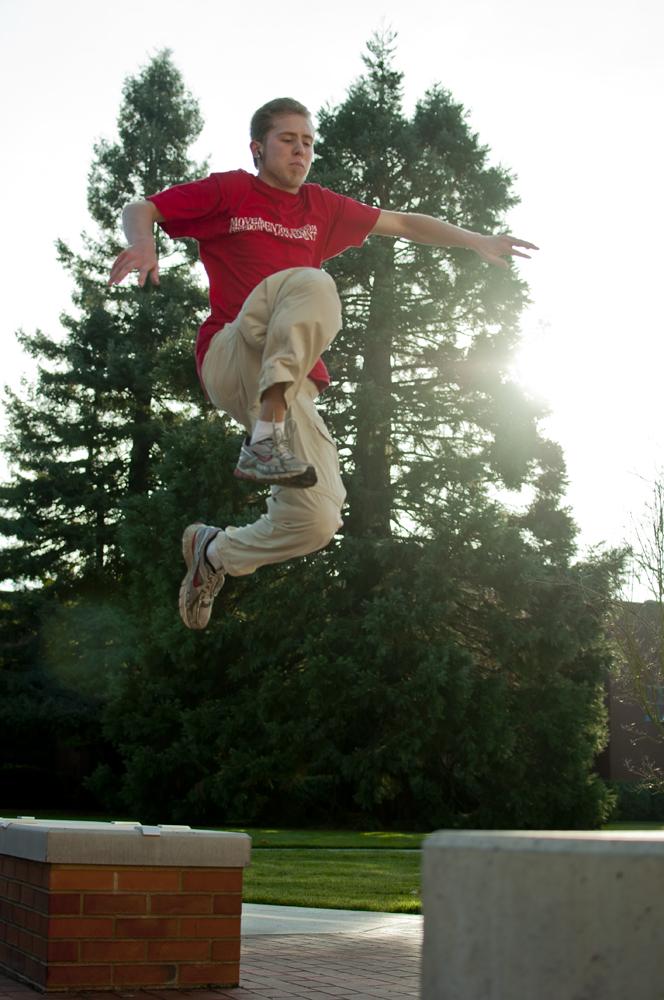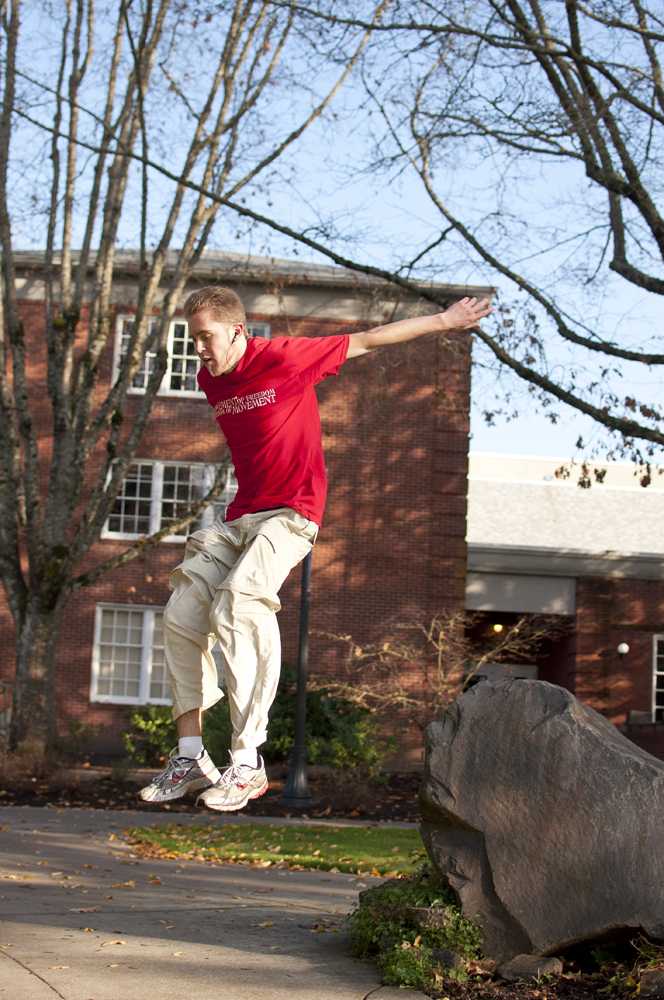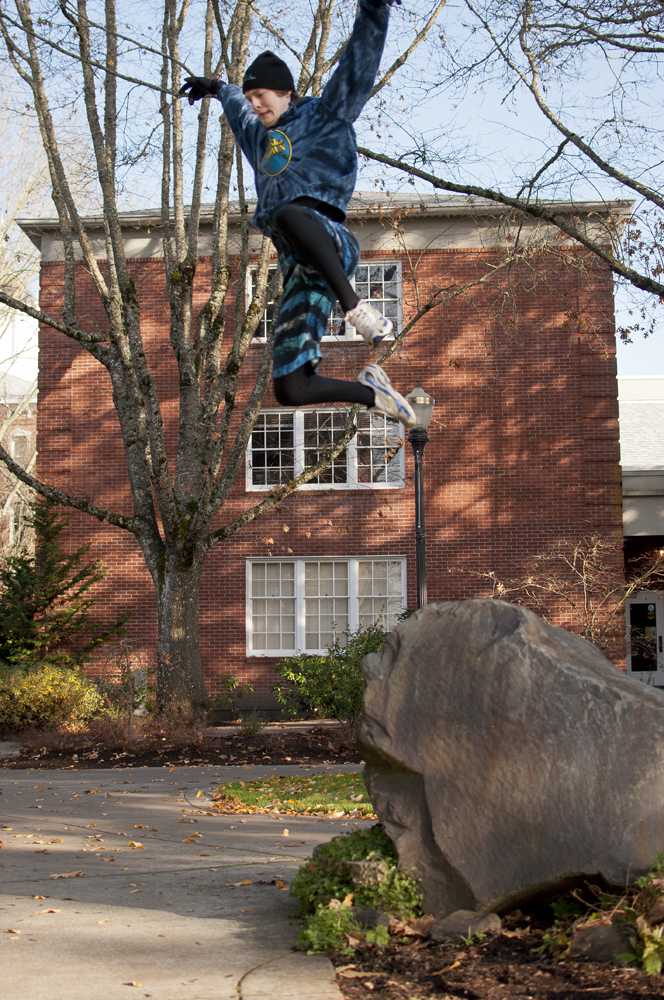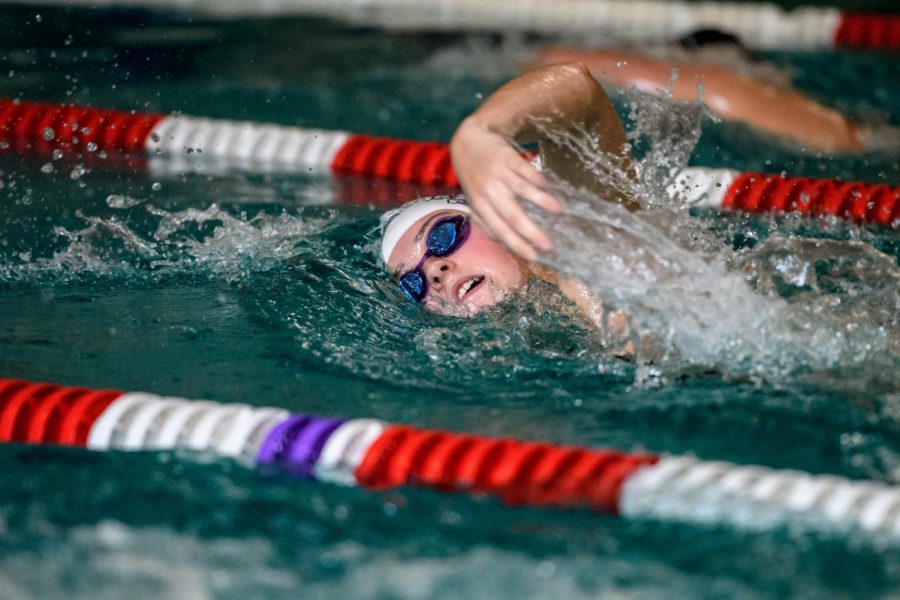They dive, roll and vault over fences. Walls and parked cars are no longer barriers. They see them as pieces to a playground and tools for expressing themselves.
Sophomore Colton Wright and freshman Cody Meadows are players in the world of parkour and free running.
Parkour is a sport in which the goal is to move through obstacles in the most efficient manner, Meadows said. Parkour athletes—traceurs—vault over walls, jump long distances, roll, flip and dive.
He said that free running shares similar techniques and tricks with parkour, but that free runners are more concerned with the aesthetics of movement.
“Parkour is a discipline and free running is an expression,” Wright said.
Parkour has French origins, as it was used as a military survival tactic during World Wars I and II. While the sport has been around for decades, it didn’t begin to gain momentum until the 21st century, Wright said.
Meadows said he began exploring parkour when he was in seventh grade. At the time, his practice was just an extension of his penchant for other extreme sports, such as snowboarding and skating. Some of his first parkour moves involved flipping off objects onto snow drifts.
Wright didn’t begin practicing parkour until the summer before he began college at Linfield. Some poor coaching had begun to push Wright away from his background as a long distance runner, he said, and he wanted to find a new passion.
Wright had already seen parkour and free run stunts on television shows, such as “Ninja Warrior” and “Jump City.” Since he enjoyed being active and moving, parkour seemed like an obvious sport to engage in.
“Personally, I’m not good at expressing words but I can define myself through actions and movements,” Wright said.
Meadows and Wright crossed paths on Linfield’s campus last year, when Wright saw Meadows doing a stunt.
“I was outside one day when I saw Cody and his friends practicing flips in front of Frerichs,” Wright said. “It turned out that Cody had been practicing for three years. We decided to train together and we’re always finding out more things we have in common.”
Wright and Meadows try to practice their stunts around campus and in McMinnville each Sunday.
“It’s our version of church,” Meadows said.
This camaraderie between parkour athletes and free runners is expected, Meadows said.
Meadows described a visit to the UK, where he met a top-ranked parkour team. The team invited him to do some stunts with them, he said.
“Asking a traceur to do a flip with you is like getting an autograph,” Wright said.
Wright said that he has built relationships through a parkour group in San Francisco.
Aside from supporting each other in person, traceurs and free runners are active as an online community.
Meadows said that thousands of YouTube videos are dedicated to parkour and free running demonstration and tutorials.
Because the sports usually turn into lifestyles, it’s common for traceurs and free runners to watch online videos of stunts when they aren’t actually performing them.
“It’s easy to start watching parkour videos and then realize that you spent the entire day in front of your computer,” Meadows said.
But even with the support his parkour community provides, Wright said that fear still plays a dominant role in his practice.
“One of the biggest obstacles is fear,” Wright said. “You are always hesitant to break out of that shell and try something you’ve never done before.”
He said that traceurs and free runners often take time to prepare for a stunt they’re about to pull, mentally measuring out the steps and jumps they’re about to take.
“Sometimes I’ll just stand in front of bars or a wall for about five minutes, working up the courage to make my move,” Wright said.
But even after planning exactly what stunts he will pull, fear still creeps into his practice, he said, motioning to a scar along his right shin.
Wright said the scar came from when he was leaping across multiple rails behind his high school, hesitated for a moment, and landed unevenly on one of the bars. His shin drug across the pole before he landed on the ground in pain.
“I just remember lying on the ground, ready to pass out from pain because it hurt so much,” Wright said. “It didn’t help when I looked at the pole and saw my skin on it.”
But even with occasional injuries, Wright said he can’t stop practicing parkour. He encourages people to try it, even if they don’t come from gymnastic backgrounds.
Wright said his athletic background was limited to cross country and track, but that he was still able to successfully break into the parkour and free running scene.
“I always want people to give it a try,” he said. “All I want is for you to move your body and let it take control.”
____________________________________________________________________
Joanna Peterson/ Managing editor
Joanna Peterson can be reached at [email protected].
Photos by Joel Ray/ Photo editor




